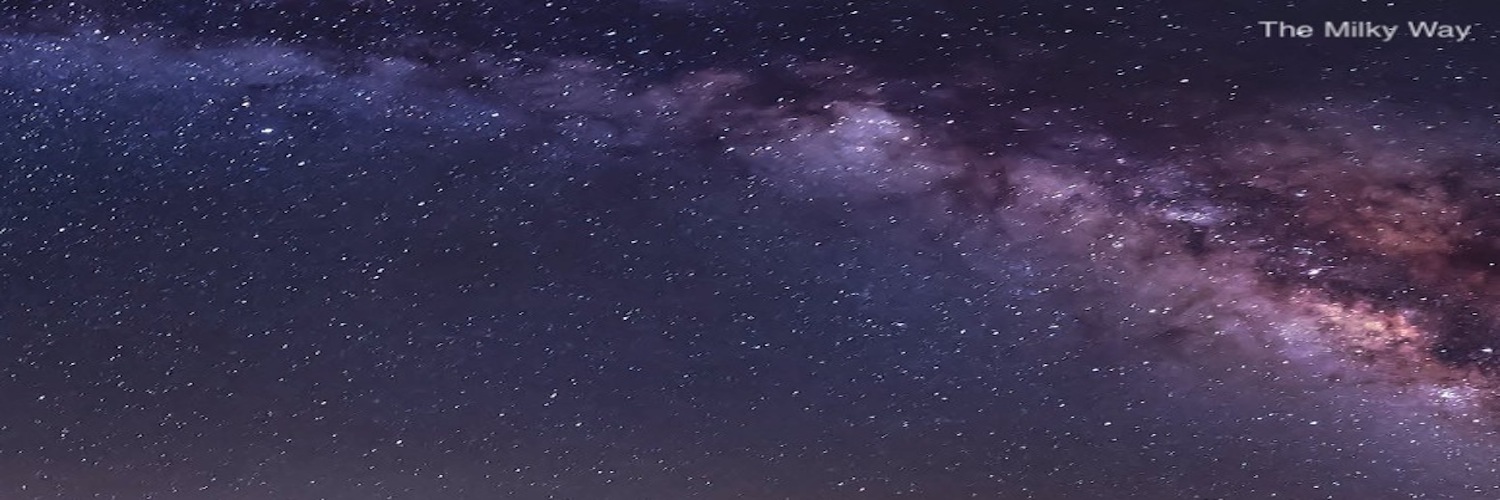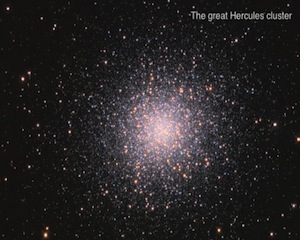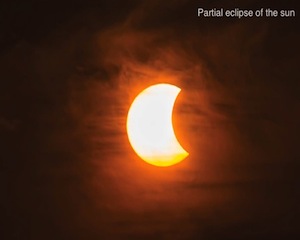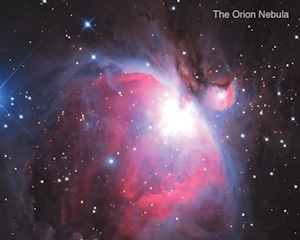
101 Amazing Sights of the Night Sky
George Moromisato’s 101 Amazing Sights of the Night Sky is a curated guide to the best the night sky has to offer. George shares with us some tips and pointers that make a night under the stars exciting and meaningful.
 Once, we were all astronomers. Before electric lights banished the Milky Way, before digital clocks announced the time, and way before GPS satellites let us know exactly where we were on Earth, the night sky was our entertainment, our timepiece, and our compass. Understanding the night sky was a matter of life or death. The North Star guided wandering hunters back home, and the rising of the constellations determined when planting should start or when the Nile might flood.
Once, we were all astronomers. Before electric lights banished the Milky Way, before digital clocks announced the time, and way before GPS satellites let us know exactly where we were on Earth, the night sky was our entertainment, our timepiece, and our compass. Understanding the night sky was a matter of life or death. The North Star guided wandering hunters back home, and the rising of the constellations determined when planting should start or when the Nile might flood.
Today, thousands of years later, we’ve gained knowledge our ancestors could never imagine. We are awed by the scale of the universe, thrilled by the beauty of colliding galaxies, and humbled by the work and dedication that went into discovering it all. We don’t need to be astronomers anymore, but we want to be.
The frontiers of astronomy require billion-dollar equipment: space telescopes, mountaintop observatories, and super-sensitive digital camera arrays. But ancient observers unraveled many mysteries just by looking up, and no amount of technology can replace the thrill of seeing the Milky Way with your own eyes.
Here are tips that will help you get the most out of whatever equipment you have.
Observing with the Naked Eye
 Some sights, like meteor showers and aurorae, are best seen with the naked eye. But even objects like the Pleiades, which are beautiful through a telescope, can be rewarding visually. To get the most out of naked-eye observing, invest a little effort in learning the brightest stars and major constellations. Being able to recognize Orion, Leo, Cygnus, and Cassiopeia will help to orient you in the sky. It’s like learning the streets of your town by noting landmarks.
Some sights, like meteor showers and aurorae, are best seen with the naked eye. But even objects like the Pleiades, which are beautiful through a telescope, can be rewarding visually. To get the most out of naked-eye observing, invest a little effort in learning the brightest stars and major constellations. Being able to recognize Orion, Leo, Cygnus, and Cassiopeia will help to orient you in the sky. It’s like learning the streets of your town by noting landmarks.
The more constellations you recognize, the easier it will be to notice when a planet wanders by. And, of course, the more of the sky you know, the easier it will be to find some of the objects in this list. The biggest obstacle you’ll face is probably light pollution. The Milky Way is invisible in almost all urban and suburban areas, which means many faint stars will also be invisible. Our National Parks are some of the last areas in the country where you can see the full beauty of the night sky. Don’t miss the opportunity to visit them.
Of course, travel is not always convenient, and even from your backyard there is much to see. You’ll need to compensate to make the most of your skies:
- Spend time getting your eyes used to the dark. After 30 minutes in darkness, your eyes will adapt and be able to see fainter stars. If you need a light when you’re stargazing, use a red flashlight (or a normal one covered with red cellophane). Red light doesn’t “reset” your night vision like white light does.
- Avoid moonlit nights if you want to see the stars. The brightness of the moon washes out the rest of the sky.
- Focus on objects straight overhead (the zenith) instead of close to the horizon.
- Take advantage of nights with excellent transparency. Use the Clear Sky Charts site (cleardarksky.com/) for a forecast of sky conditions in your area.
Lastly, prepare appropriately for a long night out. Use a lawn chair to lie down and stare up at the sky. Make sure you have plenty of warm clothes or blankets—there’s nothing worse than suffering in the cold. And remember that stargazing is a social activity. You’ll enjoy the experience much more if you share it with friends and family.
Observing with Binoculars
 You’re familiar with the brightest stars and the constellations; you can recognize a planet immediately; and you’re eager to see more. Time to buy a telescope? Maybe or maybe not. Binoculars are essentially mini-telescopes. They’re not as powerful as their larger cousins, but they’re cheaper, more portable, and much easier to use. Plus, you may already have a pair gathering dust in the closet.
You’re familiar with the brightest stars and the constellations; you can recognize a planet immediately; and you’re eager to see more. Time to buy a telescope? Maybe or maybe not. Binoculars are essentially mini-telescopes. They’re not as powerful as their larger cousins, but they’re cheaper, more portable, and much easier to use. Plus, you may already have a pair gathering dust in the closet.
There are many sights visible with binoculars, including dozens of nebulae and clusters. Large open clusters like the Hyades, for example, are best seen through binoculars. Even some large nebulae, like the North America Nebula, are better seen with binoculars than with high-magnification telescopes.
Consider mounting your binoculars on a tripod. Your hands will get tired from holding up even the lightest binoculars. Bring a chair, stool, or even a lawn chair so you can sit comfortably while looking up.
Figure out the field of view of your binoculars. For example, 7 × 50 binoculars can see 6 or 7 degrees of sky—enough to fit 12 or 14 full moons side-by-side. Knowing the field of view will help you to navigate the sky using a chart.
Observing the Sun
Observing the sun is the only activity in astronomy that presents real danger. Focused sunlight can blind you, and the larger the telescope, the bigger the risk. Just a glance is enough to do permanent damage. Use front-mounted solar filters from reputable telescope dealers to observe safely. Make sure to leave the lens cap on any optical system without a filter (e.g., a telescope’s finder scope). I usually tape down both the filter and any lens caps to prevent accidental exposure.
Another option is solar image projection: Mount a pair of binoculars on a tripod with both lens caps on and point it at the sun. Use the shadow of the binoculars to properly aim. Now remove one of the lens caps and let the image of the sun project down to a piece of white cardboard.
This method of indirect viewing is great for a group of people. As always, though, make sure curious children don’t try to look through the binoculars directly, and never leave the setup unattended.
Observing with a Telescope
 As with binoculars, make sure you know your telescope’s field of view. Different eyepieces will provide different magnification and thus different fields of view. In general, you’ll want to start with low-power eyepieces to find a target and progress to higher powers, if appropriate.
As with binoculars, make sure you know your telescope’s field of view. Different eyepieces will provide different magnification and thus different fields of view. In general, you’ll want to start with low-power eyepieces to find a target and progress to higher powers, if appropriate.
Viewing faint objects like galaxies requires the best conditions: dark, clear, moonless nights. Start with low power so their faint light is concentrated in a small area—that will make them easier to see.
In addition, faint objects often require an observing technique known as averted vision. The centers of our eyes are good at seeing fine detail and color, but they aren’t very good in low-light conditions. In contrast, our peripheral vision is sensitive to low light levels but not very good at detail or color. Try looking away from faint objects; you might notice them suddenly appearing bigger and brighter.
Planets, planetary nebulae, and many star clusters can handle higher magnification. These objects generally need steady skies—light pollution doesn’t affect them as much. If the object appears to waver as if it’s underwater, it means the sky is too turbulent for high magnifications. Wait for a better night, or try a different target.
About the author: George Moromisato is an American software engineer, game designer, and astrophotographer. He’s been programming for 70% of his life and has worked at Microsoft, IBM, and Lotus Development Corporation. He is the designer of several computer games, including Anacreon (one of the first 4X games), Chron X (the first online collectible card game), and, most recently, Transcendence. But his first love is astronomy, and he avidly photographs the night sky. He is the co-founder of PhotonSky.com, an upcoming site for sharing astrophotos and for promoting amateur astronomy. George lives in San Mateo, CA.
If you enjoyed this post, sign up for our newsletter. #bewellbeoutdoors



Pingback: Getting Ready for The Total Solar Eclipse - Adventure Publications
Pingback: Solar Eclipse Generates Interest in the Night Sky - Adventure Publications
Pingback: Total Eclipse of the Sun—A Celestial Event - Adventure Publications
Pingback: Enter Our Giveaway Celebrating the Solar Eclipse - Adventure Publications